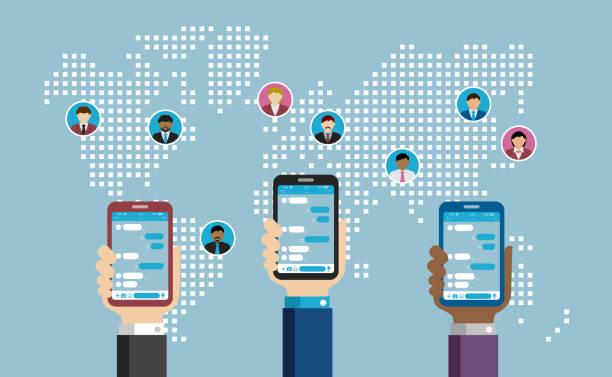The way people stay in touch has changed so much in just a few short years. Once, we all relied on simple texts or long email chains. Now, we live in a world where a single tap opens conversations that span cities, time zones, even languages. Two modern examples—one offering a Chinese version of a popular secure messaging app, and another designed for web-based access—show just how much the communication landscape has evolved. Together, they reveal a simple truth: connection is about comfort and accessibility as much as technology.
Speaking the Same Language, Digitally
Language sits at the heart of communication, and it’s no surprise that platforms have started to adapt to that reality. The service known as Telegram中文版 gives Chinese-speaking users a familiar way to explore features that might otherwise feel distant or technical. It’s more than just translating words on a screen; it’s about re-creating the same sense of ease and understanding that English speakers have enjoyed for years.
Having a localized version means users no longer have to wrestle with unfamiliar menu labels or unclear settings. It invites them into a digital space where privacy, speed, and design all feel intuitive. This kind of linguistic bridge builds trust—people engage more deeply when the platform “speaks their language.” What once might have felt foreign now feels like home, wrapped in familiar words and rhythms.
The Freedom of Browser-Based Access
While some messaging apps have leaned into localization, others are focusing on device freedom. That’s where whatsapp网页版登入 comes in—a web-based entry point that lets people connect straight from their browsers. It’s a small change with a big impact: no more juggling between phone and computer just to send a quick reply.
For those who work, study, or multitask across devices, this approach fits naturally into their day. You can pick up a chat on your laptop while drafting an email, share a document without switching screens, or type long messages comfortably on a keyboard. It turns instant messaging into something effortless and adaptable, the kind of feature that quietly becomes part of daily routine.
Keeping Privacy at the Core
Convenience alone isn’t enough anymore—people want to know their messages are safe. Platforms offering web logins or translated versions have to maintain the same level of security that made them popular in the first place. Strong encryption, verified links, and session controls aren’t optional; they’re the foundation of modern trust online.
Users today are more aware of what goes on behind the screen. Many double-check URLs before logging in, especially with so many fake sites floating around. The smarter approach is to make sure any messaging service you use—whether it’s a localized version or a browser login—is official and encrypted from end to end. That’s the difference between real convenience and risky shortcuts.
The Smooth Shift Between Devices
One of the quietest revolutions in tech has been how seamlessly we can move between our devices. A conversation that starts on a phone can now continue on a laptop without missing a beat. The transition feels natural because platforms have been designed for fluidity. Web versions and localized apps together make this possible, shrinking the gap between languages and screens alike.
That kind of continuity might sound simple, but it’s part of what keeps users loyal. Whether someone’s working late on a desktop or chatting during a commute, the experience feels consistent and familiar. It’s this predictability—the sense that your words follow you wherever you go—that defines modern communication.
Localization: The Subtle Power of Familiarity
When a global platform creates a localized interface, it’s not just doing translation—it’s showing respect for its users’ comfort zone. Familiarity matters. A person reading instructions or privacy options in their own language feels understood, not just accommodated. It also opens the door to wider adoption, as new users find fewer reasons to hesitate.
Localization even goes beyond words. Sometimes it means tweaking settings to suit local privacy laws, or adjusting notifications to align with regional habits. Every detail, from font choice to help menus, becomes part of how people connect. That’s what makes these tailored versions so effective—they’re not one-size-fits-all, but rather built to feel human.
Looking Ahead to the Future of Messaging
If the current direction is any indication, the next few years will only blur the line between devices, languages, and experiences. Messaging apps are learning to travel with us, automatically adjusting to where we are and what we need. Imagine opening a chat window that instantly adapts its language or syncing a new device without missing a single message—that’s the road we’re heading down.
The push toward web-based logins and multilingual support isn’t just convenience—it’s a kind of democratization of communication. It ensures that no one feels left out because of a screen size or a language barrier. For users, it’s the ultimate form of flexibility: message anyone, anywhere, from whatever device feels right at the moment.
Closing Thoughts
The story of modern communication is really the story of small details making a big difference. Whether it’s a localized version like Telegram helping users feel at home, or the accessibility of whatsapp simplifying device transitions, both represent how far messaging platforms have come. They show that the goal isn’t just connection—it’s connection that feels personal, private, and effortless.
In the end, these innovations aren’t about replacing conversation—they’re about keeping it alive, across borders and keyboards alike. Technology may power it, but it’s the human need to be understood that gives it meaning.


